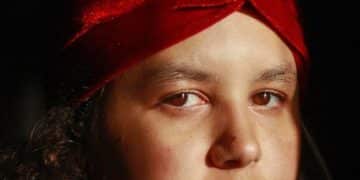Rediscovering the Genius of Giovanni Boldini: A Forgotten Master

Giovanni Boldini, an Italian genre and portrait painter of the Belle Époque, captured the essence of Parisian high society with his dynamic brushstrokes and glamorous portrayals, yet his contribution to art history is often overlooked.
Step into the dazzling world of Giovanni Boldini, a master portraitist whose vibrant depictions of Parisian elegance have been unfairly overshadowed by his contemporaries. Rediscover the artistry and influence of this forgotten genius, whose work continues to captivate and inspire.
Rediscovering Giovanni Boldini: The Master of Movement
Giovanni Boldini, an Italian painter who flourished during the Belle Époque, is an artist whose name may not be as immediately recognizable as some of his contemporaries. Yet, his contributions to portraiture and genre painting are undeniable, marked by a distinctive style that captures the energy and sophistication of Parisian high society.
Boldini’s work is characterized by its dynamic brushstrokes, elegant compositions, and an uncanny ability to convey the personality of his sitters. Why, then, has his legacy been somewhat eclipsed?
Early Life and Artistic Beginnings
Born in Ferrara, Italy, in 1842, Giovanni Boldini’s artistic inclinations were evident from a young age. He received his initial training from his father, also a painter, and later enrolled at the Academy of Fine Arts in Florence.
- Boldini’s early works reveal a strong foundation in traditional techniques.
- His initial focus was on landscape and genre scenes.
- He quickly demonstrated a talent for capturing light and atmosphere.
Move to Paris and Rise to Fame
The turning point in Boldini’s career came with his move to Paris in 1871. The city was then the epicenter of artistic innovation, attracting artists from around the world. Boldini quickly immersed himself in the vibrant cultural scene, establishing himself as a sought-after portrait painter.

Boldini’s portraits of society figures, actresses, and writers became his hallmark, capturing the spirit of the age with unmatched flair. His ability to convey movement and energy through his brushwork set him apart, making his paintings instantly recognizable.
In conclusion, Giovanni Boldini’s early life and artistic journey laid the groundwork for his success in Paris, where his unique style and ability to capture the essence of his subjects propelled him to fame.
Boldini’s Unique Artistic Style: A Symphony of Brushstrokes
Giovanni Boldini’s artistic style is a distinctive and captivating blend of impressionistic techniques and a keen understanding of capturing movement and personality. His portraits are not mere likenesses; they are dynamic representations that convey the essence of his subjects.
What are the key elements that define Boldini’s unique style?
Dynamic Brushwork and Movement
One of the most recognizable features of Boldini’s style is his dynamic brushwork. He employed long, sweeping strokes to create a sense of movement and energy in his paintings. This technique not only added visual interest but also captured the fleeting moments of life.
- Boldini’s brushstrokes often appear spontaneous and effortless.
- He used bold colors to create a sense of vibrancy and excitement.
- His ability to convey movement is unparalleled, making his portraits feel alive.
Capturing the Glamour of the Belle Époque
Boldini’s portraits are synonymous with the glamour and elegance of the Belle Époque. He had a knack for capturing the fashion, hairstyles, and accessories of the time, creating a visual record of the era’s opulence.
His portraits often feature women in luxurious gowns, adorned with jewels and feathers, set against a backdrop of opulent interiors. This attention to detail and celebration of beauty contributed to the enduring appeal of his work.

Influence of Photography
Boldini was also influenced by the emerging medium of photography. He used photographic techniques to study composition and capture fleeting moments. This influence is evident in the dynamic poses and candid expressions of his subjects.
Giovanni Boldini’s unique style, characterized by dynamic brushwork, a celebration of glamour, and the influence of photography, made him a master of portraiture during the Belle Époque.
Forgotten No More: Why Boldini Deserves More Recognition
Despite his success during his lifetime, Giovanni Boldini’s legacy has been somewhat overshadowed by his contemporaries. Why has his work not received the same level of recognition as that of other artists from the Belle Époque?
It’s time to reconsider Boldini’s place in art history and recognize the unique contributions he made to portraiture and genre painting.
Historical Context and Artistic Movements
One reason for Boldini’s relative obscurity may be the historical context in which he worked. The late 19th and early 20th centuries were a time of rapid artistic change, with Impressionism, Post-Impressionism, and various avant-garde movements vying for attention.
Boldini’s style, while innovative in its own right, did not neatly fit into any of these categories. His focus on portraiture and his celebration of beauty and elegance may have been seen as conservative by some critics.
Rediscovering Boldini’s Influence
In recent years, there has been a growing interest in rediscovering the work of Giovanni Boldini. Major exhibitions have been held in museums around the world, showcasing his paintings and highlighting his contributions to art history.
These efforts have helped to raise awareness of Boldini’s work and to challenge the conventional narrative of the Belle Époque. As a result, his reputation is gradually being reassessed, and his paintings are finding a new audience.
- Boldini’s dynamic portraits capture the spirit of the Belle Époque.
- His unique style blends impressionistic techniques with a focus on movement.
- Rediscovering his work enriches our understanding of art history.
Boldini’s Enduring Appeal
Despite the challenges he faced during his lifetime, Giovanni Boldini’s work continues to captivate and inspire. His portraits offer a glimpse into the world of Parisian high society, capturing the elegance, glamour, and energy of the Belle Époque.
His paintings are a testament to the power of art to transcend time and culture. As we rediscover his legacy, we gain a deeper appreciation for the richness and diversity of art history.
Giovanni Boldini deserves more recognition for his unique contributions to portraiture and his ability to capture the spirit of the Belle Époque.
Boldini and the Belle Époque: A Visual Chronicle of an Era
Giovanni Boldini was not just a painter; he was a chronicler of the Belle Époque, the “Beautiful Era” that spanned from the late 19th century to the outbreak of World War I. His portraits offer a vivid and compelling glimpse into the world of Parisian high society, capturing its elegance, glamour, and energy.
How did Boldini’s work reflect the spirit of the Belle Époque?
Fashion and Society
Boldini’s paintings are a treasure trove of information about the fashion and social customs of the Belle Époque. His portraits depict women in luxurious gowns, extravagant hats, and exquisite jewelry. These details provide insight into the values and aspirations of the era.
- Boldini’s portraits capture the elegance of the Belle Époque fashion.
- They offer insight into the social customs of Parisian high society.
- His paintings reflect the era’s emphasis on beauty and refinement.
The Spirit of Innovation and Change
The Belle Époque was a time of great innovation and change, marked by advances in technology, science, and culture. Boldini’s paintings reflect this spirit of progress, capturing the dynamism and excitement of the era.
His portraits often depict individuals who were at the forefront of these changes, from artists and writers to scientists and entrepreneurs. These figures embody the optimism and ambition that characterized the Belle Époque.
The Shadow of War
The Belle Époque came to an abrupt end with the outbreak of World War I. Boldini’s later works reflect the changing mood of the era, capturing the anxiety and uncertainty that followed the war.
Despite the challenges he faced, Boldini continued to paint, capturing the resilience and determination of the human spirit. His work provides a poignant reminder of the fragility of beauty and the enduring power of art.
Giovanni Boldini’s portraits of the Belle Époque are a visual chronicle of an era, capturing its fashion, society, spirit of innovation, and the shadow of war.
Boldini’s Techniques: Secrets of a Master Portraitist
Giovanni Boldini’s mastery of portraiture is evident in his innovative techniques. By understanding his methods, we can appreciate his artistic genius even more.
What were the specific techniques that Boldini employed to create his distinctive style?
Use of Color and Light
His strategic use of color and light to create mood and visual interest gave the paintings an overall feeling of depth and richness. Boldini’s portraits are not only visually stunning but also emotionally resonant.
- Employing bold and vibrant colors to capture attention.
- Using soft, diffused light to create a sense of intimacy.
- Strategically uses shadows to add depth and drama.
Composition and Gesture
Boldini’s approach to composition and the use of expressive gestures were integral to his work. The ability to capture movement and personality through the arrangement of figures and their poses set his work apart.
The strategic use of line and form, helps guide the viewer’s eye and create a sense of harmony and balance. A close examination reveals how each element contributes to the overall impact of the work.
Alla Prima and Impasto
The strategic use of alla prima and impasto techniques played a crucial role in his ability to achieve a sense of spontaneity and dynamism. Boldini’s technique involves painting directly onto the canvas without extensive layering.
The use of thick, textured brushstrokes adds depth and dimension to the surface. The artist’s skill lies in the ability to capture the essence of the subject in a single, energetic session.
Giovanni Boldini’s innovative use of color and light, his strategic approach to composition and gesture, and his skillful deployment of alla prima and impasto techniques are testaments to his mastery of portraiture.
The Enduring Legacy of Boldini: A Timeless Appeal
Giovanni Boldini’s art continues to captivate and impress audiences today, making his legacy a great asset in the world of art even now. Although the Belle Époque happened many years ago, the paintings still capture emotions.
What is it about Boldini’s art that continues to resonate with viewers?
His Ability to Capture Beauty
Boldini had a unique ability to capture beauty, and his art reflects this talent. His portraits are timeless and elegant, regardless of the passing trends.
- Boldini’s timeless portraits.
- Boldini’s celebration of elegance throughout his artwork.
- The connection that Boldini creates with his emotions.
His Captivating Glimpse into the Belle Époque
Boldini’s paintings offer an immersive journey into the Belle Époque. The beauty of the art is an enduring source of fascination.
Every portrait showcases a time considered the “beautiful era”. While art and life may change, fascination will always be around.
A Timeless Appeal
Boldini’s art resonates with the viewer. He captures essential things, like beauty and emotions.
His art has been displayed throughout museums for people to see and it is still amazing even more than 100 years later.
Giovanni Boldini is sure to be a legacy for centuries to come.
| Key Point | Brief Description |
|---|---|
| 🎨 Unique Brushwork | Boldini’s dynamic brushstrokes create movement and energy. |
| 👗 Belle Époque Glamour | Captures the era’s fashion and society. |
| 🖼️ Rediscovering Influence | Boldini’s art is experiencing a revival. |
| 📸 Photography Influence | Boldini incorporates photographic techniques into his art. |
Frequently Asked Questions about Giovanni Boldini
▼
Some of his most well-known paintings include “Portrait of Madame X,” “Robert de Montesquiou,” and “Place Pigalle.” These works showcase his distinctive style and talent for capturing the essence of his subjects.
▼
Boldini is primarily associated with the Belle Époque and is known for his contributions to portraiture during this period, but his works also have connections to Impressionism.
▼
Moving to Paris marked a turning point in his career. The city’s vibrant cultural scene allowed him to establish himself as a sought-after portrait painter and develop the style he became famous for.
▼
Boldini’s paintings are highly valued by art collectors and can be found in museums and private collections worldwide. As his work gains more recognition, its value continues to grow.
▼
Art enthusiasts and historians ensure his legacy by promoting and displaying his works, conducting extensive research, and teaching about his artistic contributions. All of that builds upon his greatness.
Conclusion
In conclusion, Giovanni Boldini was a brilliant artist whose innovative techniques and insightful portraits captured the essence of the Belle Époque. By celebrating and discovering his work, we highlight his legacy, we enrich art with his captivating genius and rediscover its timeless appeal.





